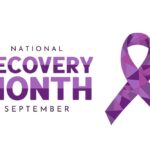If you have ever noticed that you feel more down in the winter months, you may be struggling with seasonal affective disorder (SAD), which is also known as seasonal depression or the winter blues. About five percent of Americans deal with seasonal depression each year, most of them women. At Palms Behavioral Health, in Harlingen, Texas, we treat people who are struggling with depression and other mental health diagnoses.
Causes of Seasonal Depression
Seasonal depression does not just happen in the fall and winter. It can also occur in the spring and summer, though this is far less common. It is believed that the reason more people experience SAD in the colder months is due to a decrease in light during this time, which can also:
- Reduce a person’s serotonin levels – Serotonin is a chemical that brains make naturally, that impacts mood. Brain scans on people with SAD found that their brains removed serotonin at a higher rate in the winter, than people who didn’t have seasonal depression.
- Cause the brain to create more melatonin, a hormone that makes us tired and impacts our mood, which has also been linked to SAD. Melatonin also impacts our body’s circadian rhythm, which is the natural clock our bodies run on. When our internal clock does not align with external clocks, it can mess up our sleep cycle. Any time our sleep cycle is disturbed, we do not tend to feel our best.
This also explains why seasonal depression is more common in areas that are further from the equator, where sunshine is more scarce in the cold months.
Seasonal Depression Symptoms
Different types of depression can have overlapping symptoms, such as:
- Unpleasant feelings
- Guilt
- Hopelessness
- Loss of interest in previously enjoyable activities
- Despair
- Emotional numbness
- Anxiety
- Big changes in mood, especially if the person already struggles with bipolar disorder
- Sleep difficulties
- Struggling to not oversleep
- Waking up too early
- Not sleeping through the night
- A tendency to avoid social interactions
Additionally, seasonal depression increases the risk of people experiencing symptoms they might not normally exhibit with other forms of depression:
- Increased appetite, with a particular craving for carbs
- Weight gain
- Excessive sleepiness
Preventing and Treating SAD
Like other forms of depression, people with SAD can experience suicidal thoughts that place their life in danger, so even though it is a type of depression that is shorter in duration, it should still be taken seriously and treated accordingly. The good news about seasonal depression is that it is possible to predict when it is likely to return, which allows patients and their treatment team to take preventative measures.
- More light can be helpful.
- Spending extra time outdoors, especially in the early morning, can increase exposure to natural light. Even if it is cloudy, there is a benefit to being outside.
- Light therapy can simulate the effect of natural light in areas that don’t have much sunlight in the winter or where it is too cold to spend much time outside. About 85 percent of patients diagnosed with SAD find that light therapy, starting in the early fall, can help to offset the decreased sunlight available in the colder months of the year. Light therapy may not be a good idea for people with sensitive skin, eye problems (glaucoma, cataracts or diabetic eye conditions) or bipolar disorder. Overusing light therapy can trigger mania symptoms for people with bipolar disorder.
- Going somewhere with more sun can also be helpful, if your budget allows.
- Increased exercise can help the body to make more of the “feel good” chemicals that brains need to keep moods steady. 30 minutes per day, at least five times per week is recommended.
- Meditation and other mindfulness techniques can help people stay grounded during seasonal transitions, as can journaling and other relaxing activities.
- Maintaining social connections can help people with SAD get through this difficult time by reducing isolation. Phone calls, face to face interactions or virtual meetups can all be helpful.
- Cognitive behavioral therapy (CBT) can help people with SAD to develop coping skills.
- Eating a well-balanced diet consisting of fruits and vegetables, whole grains and lean proteins can offset carb cravings and give people more energy overall.
- Antidepressant medications may help to give the brain the chemicals it is lacking in winter but may result in side effects.
At Palms Behavioral Health, we treat different types of depression and we recognize that each variety looks different for each patient. We provide evidence-based care, in a trauma-informed setting, that is tailored to fit each client we serve.






